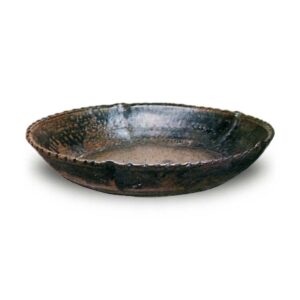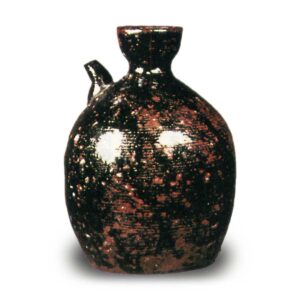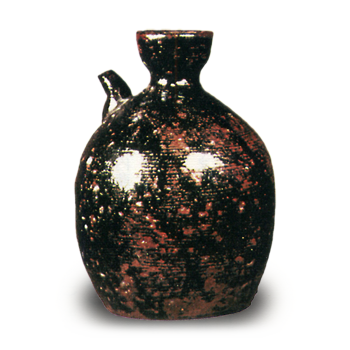

Located in Nashirogawa, Higashi Ichigo-cho, Hioki-gun, Kagoshima Prefecture.
The pottery was founded around 1606 or 16007 by a Korean potter who was originally engaged in Kushikino ware, and the central figure was Park Hei-i. He was a skilled potter, and was especially favored by Shimazu Yoshihiro, the lord of the domain. Pyeong-i was a skilled potter, and was especially favored by Shimazu Yoshihiro, the feudal lord of the domain, who gave him the name Seoemon and ordered him to be the first village headman of Maeyogawa. Yoshihiro treated naturalized potters such as Shimazu Seiemon with great respect, and his descendants were able to run their businesses with peace of mind. The pottery business was temporarily closed for about 20 years during the En, Kan’en, and Horeki periods (1744-1644), but in 1761 (Horeki 11), when Shigehiro took over the reigns of the family, he ordered the pottery business to be revived again.
The forty years from Meiwa (1764-72) to Kansei (1789-1801) was the heyday of Satsuma ware, and in 1794, the Tateno kiln finally produced brocade ware. In 1867, when the Paris World Exposition was held, Park Jeong-kwan exhibited an exquisite brocade vase that was well received. In addition to the Nishikinte Department, a porcelain factory was established in 1857 by Nariakira, the feudal lord of the domain, at Miaoyogawa Kiln Pyeong (commonly known as Nanjingshan), and Shim Joo-kwan was appointed as the director of this factory. However, in 1871, the domain was abolished, and the control of the domain was ceased, and the factory was soon placed under the jurisdiction of the prefectural government, followed by the establishment of the Pottery Company.
In 1877, during the military conflict in the southwestern part of the country, the pottery company was dissolved. All the potters in the village immediately lost their livelihood and faced the crisis of having to close their kilns. Shen Shu-guan worked hard to recover and set up a new kiln at Fujio in the same village to make it prosperous again. After the Sino-Japanese War, trade was promoted and Miaoyogawa products were greatly exported, but the trend gradually shifted toward inferior products, forcing the dissolution of the Yuguangshan Pottery Factory. After the Russo-Japanese War, there were no master craftsmen and no good managers, and the factory gradually declined. In 1960, annual production was 40 million yen, and there were 11 manufacturers.
Products: In the beginning, they made black ceramics, but after the discovery of white ceramics, they began to freely produce white ceramics, sometimes using the Goban-te of Yoshihiro to encourage their production.
However, since Maeyoungcheon ware was a private kiln, white wares were prohibited, and those other than Park Pyeong-i and Park Jeong-guan produced mainly black wares for daily use. After the Gonghwa period (1844~8), the masters were Kang Sodan, Kang Gyeongdan, and Okbongim. Porcelain, which was first produced by Shen Joo-gwan, was exported as coffee bowls and Western tableware, as well as plates and tea bowls.



